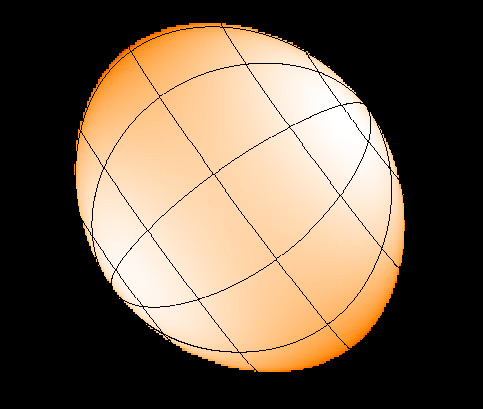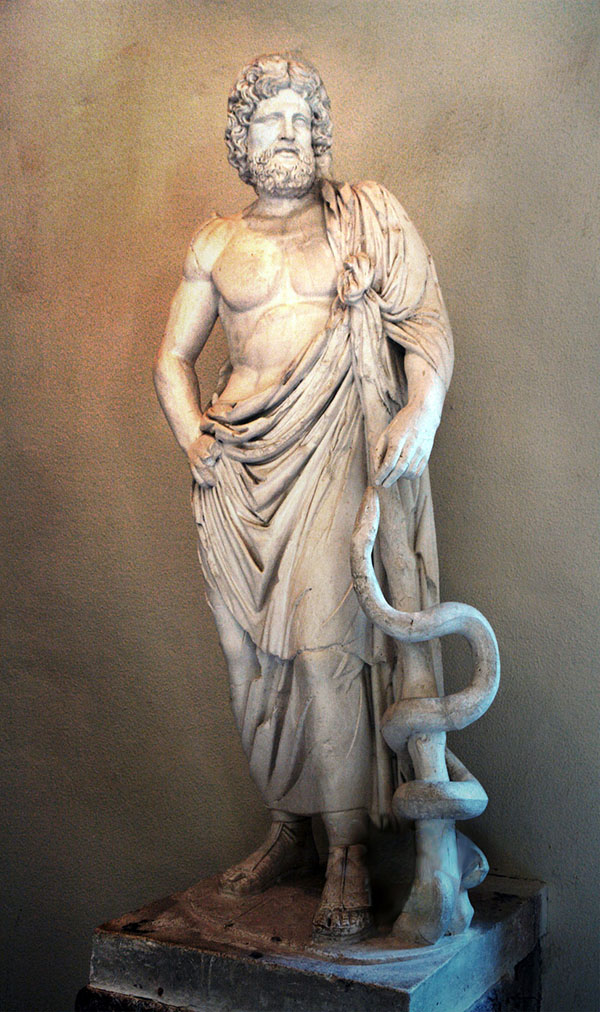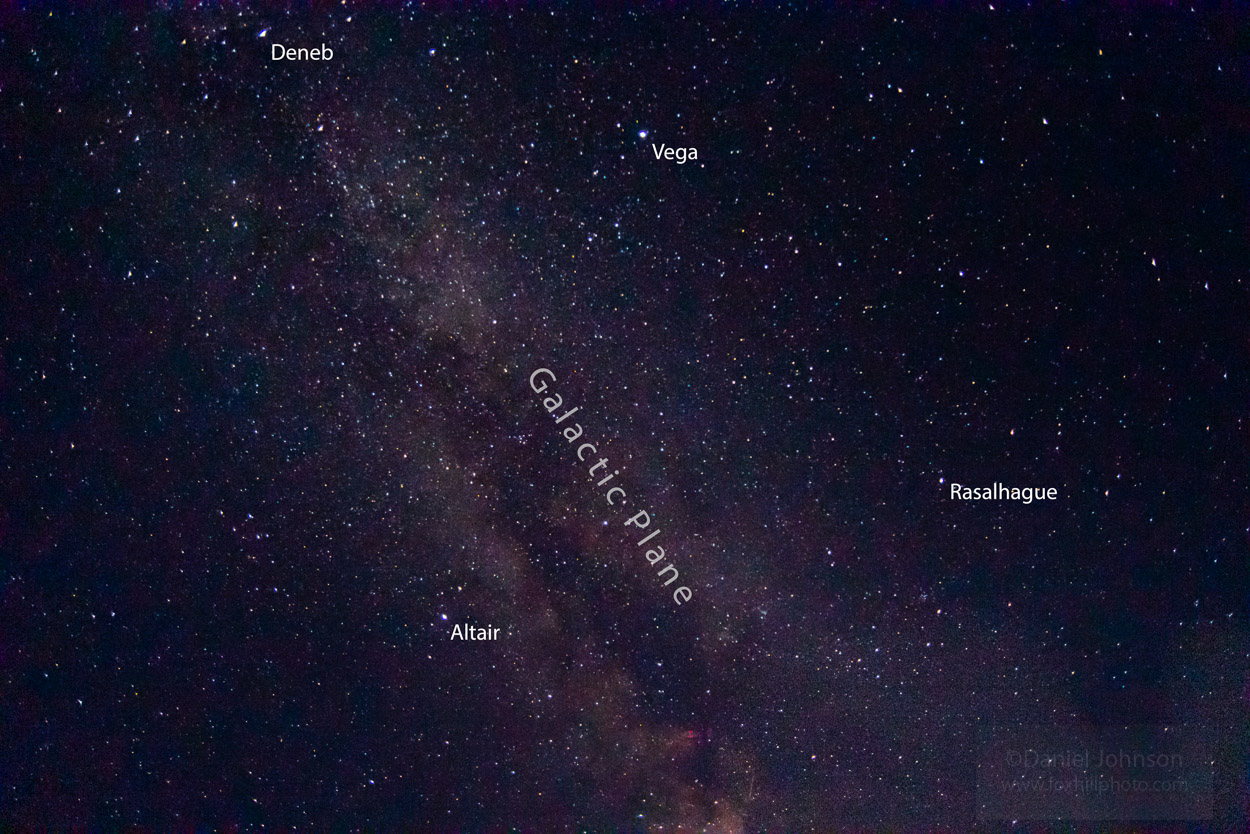Rasalhague, a star rotating so fast it has squashed itself, has a fascinating connection to the mythology of healing.
The Vitals
| Official name | Rasalhague |
| Other designations | Alpha Ophiuchi, HR 6556, HIP 86032, HD 159561 |
| Nicknames | - |
| Apparent magnitude | 2.07 |
| Distance from Earth | 48.59 light-years |
| Type | Giant (A5III) |
| Color | Bluish-white |
| Mass | 2.18M☉ |
| Radius (at equator) | 2.7R☉ |
| Constellation | Ophiuchus |
| Right ascension | 17h 34m 56s |
| Declination | 12° 33' 36” |
| Multiple system? | Yes |
| Variable star? | Slightly |
| Exoplanets status | None known |
| Probable fate | White dwarf / Planetary nebula |
Physical Characteristics

M. Zhao et al. / Astrophysical Journal 2019
Rasalhague is a fine jewel of a star, easily visible on summer evenings and not far from the Summer Triangle. Rasalhague is pretty close to Earth, just 48 light-years away. While there are plenty of red (and dim) dwarf stars within 50 light-years, there aren’t that many nearby giants. In light of its proximity, you might expect Rasalhague to be among the brightest stars in the night, but while it is a vivid 2nd-magnitude star, it doesn’t shine as brightly as some that are much further away like Betelgeuse or Deneb.
It doesn’t appear as bright to us because, with a radius and mass only about twice that of the Sun, Rasalhague doesn’t have the same real estate as other giant stars do, so it can’t compete with them even though it’s closer. But if Rasalhague weren’t emitting 25 times the light of the Sun, it would be altogether lost from easy view. Rasalhague also has a close, much smaller, and much fainter companion star with about half the Sun’s mass that orbits only 7 astronomical units away.
Rasalhague has a fabulously fast rotational speed—it’s spinning almost fast enough to break itself apart. At 240 kilometers per second (537,000 mph), Rasalhague’s equator bulges (its radius 2.4 solar radii vs. 2.8). You can’t see the distortion visually in a backyard telescope, but the Center for High-Resolution Angular Astronomy (CHARA) has combined telescopes via interferometry to measure the star’s size and shape.
Origin / Mythology
Many constellations feature a universal or immediately recognizable theme. Everyone understands an eagle (Aquila), a bear (Ursa Major), or a lion (Leo). Even specific constellations like a great hunter (Orion) or twin brothers (Gemini) are pretty easy to grasp. At the other end of the scale are constellations like Ophiuchus, which, if you go by most illustrated depictions, showcases a man holding a snake, and a pretty big one at that. Not exactly your everyday occurrence—and not a scene most people would expect see memorialized by a large portion of the night sky. So what’s going on?

Michael F. Mehnert / CC BY-SA 3.0
According to the main version in Greek mythology, the man in the constellation is Asclepius, an ancient demigod and skilled doctor. One day, a snake came too close and alarmed him, and he killed it with his staff. To his surprise, a second snake came along with an herb in its mouth, using its medicinal properties to rejuvenate the dead snake. Intrigued, Asclepius took the herb with him and put it to use, going so far as to resurrect humans from the dead. Some versions of the story have Asclepius keeping the snake, which may be why the constellation is represented the way it is.
The story encapsulates a description of early medicine and the use of herbs to assist the healing process. So, far from a bizarre image of a guy wrestling with a snake (which is how it may appear at first), the constellation Ophiuchus is a nod to healing and medical work — one of humankind’s prime achievements and something worth honoring in a constellation.
Rasalhague, the brightest star of this constellation, represents the head or face of the ancient healer; its name in Arabic means “head of the snake handler.”
One tricky fact to remember: the snake that Asclepius (Ophiuchus) is holding is represented by two different constellations entirely. Serpens, the Serpent, is broken into two sections, one on either side of Ophiuchus: Serpens Caput, meaning “head of the serpent,” and Serpens Cauda, meaning “tail of the serpent”. The snake’s body weaves behind Asclepius’ back.
How to See Rasalhague

Daniel Johnson
The Summer Triangle of the bright stars Vega, Deneb, and Altair appears high in the south after dusk. Rasalhague is nearby, and while it’s dimmer than these three, it’s not terribly so. It actually forms an almost equilateral triangle itself with Vega and Altair. Or, if you consider all four stars, they make a sort of Summer Quadrilateral. This would be a forgettable shape, if not for the fact that the Milky Way runs (roughly) through the center of the four stars.
If you’re in a location dark enough to enjoy the Milky Way in all its summer glory, you can observe Rasalhague and Vega on one side of the galactic plane, with Altair and, to some extent, Deneb on the other. Ophiuchus has plenty of stars, but Rasalhague’s brightness does stand out among them. The alpha star’s proximity to Altair and Vega should make locating it a simple matter. Otherwise, the Ophiuchus constellation is in general pretty dim and vague.
A short jump from Rasalhague will bring you to a very interesting spot in the sky: the current location of NASA’s Voyager 1 spacecraft. Though incredibly dwarfed by distance and not visible even to telescopes, the still-functioning probe is out there in the darkness, flung high above the ecliptic in a trajectory shaped by its rendezvous with Saturn’s moon Titan in 1979. (Its proximity to Rasalhague is, of course, just a line-of-sight effect.)
If you haven’t looked specifically before, Rasalhague is worth a second glance, as is the rest of Ophiuchus, which contains many deep-sky objects as well. How about tonight?
Daniel Johnson is a Wisconsin-based freelance writer and professional photographer and the co-author of over a dozen books. He’s a longtime amateur astronomer and fortunate enough to live in a rural region with excellent seeing conditions. You can view some of Dan’s photography (he does a lot of animals!) at www.foxhillphoto.com.
 5
5









Comments
Mark Holm
August 17, 2022 at 10:41 am
The article gives Serpens Caput as the name for both the head and tail of the snake. Isn’t the tail of the snake Serpens Cauda?
You must be logged in to post a comment.
Monica Young
August 21, 2022 at 1:57 pm
Thanks, we've fixed the typo.
You must be logged in to post a comment.
Paul Starman Curnow
August 23, 2022 at 11:48 pm
Thank you for this excellent article. I hope to see more articles like this that focus on individual bright stars. We have a great view of this constellation, where it appears high in southern skies over South Australia. As a matter of added trivia, this star is spinning at about 88.5% of the rate that would cause the star to break up. Keep up the great work. Paul Curnow - astronomy lecturer at the Adelaide Planetarium.
You must be logged in to post a comment.
misha17
August 24, 2022 at 1:50 pm
I have read that Asclepius (Ophiuchus) is part of the Orion mythology: Orion boasted that he was a great hunter; his pride angered the gods so they sent a scorpion to kill him with its sting. Asclepius was able to revive him, however, the gods to exception to that and killed Orion (again, this time with a thunderbolt) and Asclepius too (for good measure).
Because of their fame. the gods placed Orion (along with his 2 hunting dogs and the rabbit that he was hunting) and his nemesis the Scorpion in the heavens, but on opposite sides of the heavens from each other to keep them out of further mischief. Asclepius also earned a place in the heavens, near the Scorpion to render aid if the Scorpion ever claimed another victim.
You must be logged in to post a comment.
Monica Young
August 25, 2022 at 11:18 am
Thank you for sharing! It's interesting how many versions there are of the story.
You must be logged in to post a comment.
You must be logged in to post a comment.